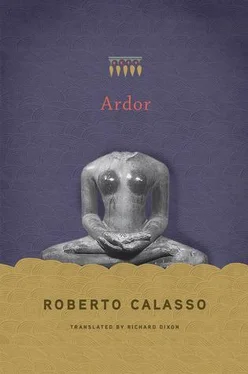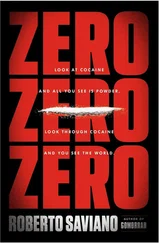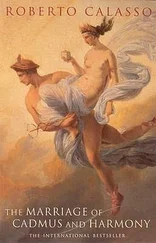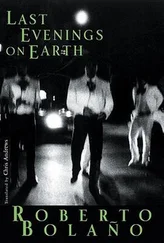* * *
Libation: the unrenounceable gesture of renouncement. Never so harrowing as the moment when we see Antigone before her dead brother, and “right away she lifted up with her hands the dry dust and a well-wrought bronze bowl to sprinkle on the corpse a triple libation.” There is no need for fresh water — nor is it necessary to pour Oriental perfumes. Even the “dry dust” sprinkled by Antigone is just as good for a “triple libation.” And the hopeless incongruity between that “dry dust” and the “well-wrought bronze bowl” that Antigone uses to pay homage to her brother goes back to the very origin of the gesture, which is the simple celebration of something that is forever lost.
* * *
The gods were great experts in the art of lengthening and shortening the rites. For the rite, like poetry, is greatly extendable or contractable. After having celebrated a sattra that lasted a thousand years, Prajāpati and the gods knew perfectly well that humans would be incapable of following them. Too weak, too incompetent. The gods said to themselves: “We have brought this [sacrifice] to an end with our divine, immortal bodies. Mortals will never be able to complete this. Let us try then to contract this sacrifice.” And so the thousand-year sattra became the gavāmayana , the “march of the cows,” which is still a sattra , but lasts only a year. But it could not be supposed, even then, that all people would spend a whole year on that rite. So the gods set about reducing it further and further. Until there were rites that lasted only three days, or two days — or just a few hours. And finally they arrived at the two agnihotras , for the morning and the evening. This was the nucleus that could be split no further. The rite consisted of pouring milk on the fire. Nothing could be simpler — even if the gesture was linked to dozens and dozens of others. Before this rite, below this rite there could be nothing more than formless life. Yet into those few minutes was concentrated the thousand-year sattra of the gods. “Therefore the agnihotra is unsurpassed. Undaunted is he who knows thus … therefore this agnihotra is unlimited.”
* * *
Each morning and each evening, just before sunrise and again before the appearance of the first star, the head of the family pours four spoonfuls of milk into a larger spoon and then pours it into the fire, twice. All forms of worship emanate from this gesture, carried out by a single person, using the most ordinary of substances, with no need for the help of priests. And it is something that has no beginning and no end, since there would be endless arguments if anyone tried to establish that the morning libation or the evening libation had priority. One relates to the other, in a perpetual cycle. Nothing comes as close to the continuity of life. And so, “as hungry children press close to their mother, so do living beings around the agnihotra. ” The simplicity of this rite can only stir the boldest speculations around it. And, above all, the “limitless” nature of those gestures reassures those who perform them as to the limitlessness of their own being, however plain and simple such display might seem: “And in truth he who knows the limitlessness of the agnihotra , in this way is himself born limitless in prosperity and progeny.”
The agnihotra is the occasion for making the distinctions on which all the rest will be built. The libation, however simple, will never be one alone, but double. Why? Because one does not exist. Even in the very beginning, there were always two beings: Mind and Speech, Manas and Vāc. Mind and Speech almost entirely overlap and allow themselves to be treated as “equals ( samāna ).” And yet they are “different ( nānā ).” When they become involved in the rite, both characters are to be remembered: so each of the libations appears as a replica of the other, yet at the same time they are different, since they are still two, and therefore with one preceding the other. And thus the relationship between two powers begins to take form. When Mind and Speech then free themselves from each other — as happens at the very moment in which the libation is repeated — it sets off the whole series of dualities with which we have to deal. And reproduced in each will be that tension between limitless and limited that already exists in the relationship between Prajāpati and the gods.
* * *
“For whichever divinity a person draws this libation, that divinity, being seized by this libation, fulfils the wish for which he draws it.” This sentence appears in the passage that most clearly expresses the acrobatic play on the word graha throughout the Śatapatha Brāhmaṇa. Usually translatable as “libation,” graha is always related to the verb grah- , “to grasp”—in a similar way as the German word begreifen , “comprehend” (from which Begriff , “concept”), is related to greifen , “grasp.” A further difficulty arises with the continuous alternation, in the word, of the active and passive meaning: graha can be the one who grasps and the one who is grasped, what draws the libation and what is drawn by it. At this point Eggeling explained in a note: “The whole Brāhmaṇa is a play on the word graha , in its active and passive meanings of grasper, holder, influence; and draught, libation.”
The libation is a way of grasping (of understanding) the divinity. And from it the divinity feels bound, grasped. This also happens with names: they are our libations to reality. They are used to grasp it: “The graha is in truth the name, for everything is grasped by a name. Why wonder, then, if the name is graha ? We know the name of many, and is it not perhaps with the name that they are grasped for us?”
* * *
A crucial equivalence is that between Sun—“that one burning yonder”—and Death. Not only can the source of energy be a cause of death, but it is death itself. This is why the relationship between Sūrya and his bride Saraṇyū bears so many similarities to that of Hades and Persephone: for the ṛṣis did not regard Hades as the one who rules over the shades but the one who streaks the sky and spreads light. Yama, ruler of the dead, would be just a son of his — a consequence of his being, which itself is already Death.
The ṛṣis , tireless speculators, thought they could make a pact with Death. They had to find a way of going beyond the Sun — therefore beyond Death. How? Thanks to the agnihotra. They had to play on the relationship between fire and light, between Agni and Sūrya. And so they established a cyclical sacrifice, where Agni and Sūrya are alternated in the offerings, fire is offered in light and light is offered in fire — at the beginning of each day, at the beginning of each night, forever. They said: “In the evening he offers Sūrya in Agni and in the morning he offers Agni in Sūrya.”
Everything, as always, went back to an episode at the very beginning. Agni, “as soon as he was born, tried to burn everything here: and so everybody tried to get out of his way.” Those who existed at that time considered him an enemy. And so, “since he was unable to endure this, [Agni] went to man.” And he proposed an arrangement: “Let me enter within you! Then, after having reproduced me, maintain me: and, as you will have reproduced and maintained me here, so then will I reproduce and maintain you in the world yonder”—“the world yonder” meaning the celestial world that is reached beyond the Sun. Man accepted: agnihotra is based on this agreement, and in this agreement man finds the only possibility of going beyond Death: using Death as a steed, making it possible to climb on its back, like a circus acrobat. And so in both daily libations of the agnihotra , at dawn and at dusk, man has to mount firmly on Death: in the evening “he mounts firmly on Death with his toes”; whereas in the morning “he mounts firmly on Death with his heels.”
Читать дальше












